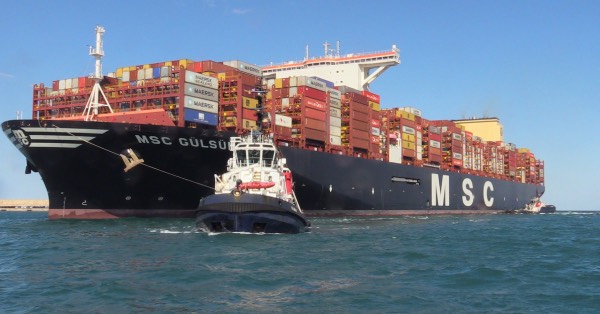The Valencia Containerised Freight Index stands at 4,267.75 points in January, 1,000 less than in January 2022
In this first month of the year, it is worth highlighting the fall in freight rates in Atlantic Europe, the Eastern Mediterranean , Latin America Pacific, Africa West Coast and the USA and Canada
In mid-January, 95 vessels were idle for a total of 577,211 TEUs, 2.2% of the active fleet
The Valencia Containerised Freight Index, the indicator that measures the trend and evolution of container transport costs by sea from the Port of Valencia, begins the year 2023 with a value of 3,211.15, more than 1,000 points below January 2022 when it stood at 4,267.75 points, representing a decrease of 25%. Compared to the previous month (December 2022) the drop was 10.88%, while it accumulates a growth of 221.11% since the beginning of the series in 2018.
In this first month of the year, it is worth highlighting the fall in Atlantic Europe (-30.47%), Eastern Mediterranean (-17.76%), Latin America Pacific (-14.76%), Africa West Coast (-12.03%) and USA & Canada (-10.45%) freight rates. The VCFI is the index based on the export prices recorded by the Port of Valencia in 13 geographical areas around the world.
As far as the world economic situation is concerned, according to the outlook for the world economy published by the IMF at the beginning of this year, a decline in economic growth of 2.9% is forecast for 2023. These data show an improvement of 0.2 percentage points above the estimate made in October, a fact that responds to a series of factors that could give the situation a certain dynamism, among which the abandonment of the ‘Covid zero’ policy by China stands out, as well as the deceleration of energy and food prices, among others. On the shipping demand side, the latest RWI/ISL Container Throughput Index shows a recovery in container traffic, intensified from the end of 2022 after the sharp decline in global traffic in October.
An important factor resulting from the interplay between supply and demand in maritime transport is the level of port congestion due to the impact it has on global supply chains. A clear downward trend in this aspect has been observed for several months now. According to the consultancy Linerlytica, at the end of January this year, 1.66 million TEUs were counted at anchorage, representing 6.4% of the total fleet, a decrease of -1.3% compared to the last count carried out a week earlier.
As far as the energy market is concerned, marine fuels have generally fluctuated downwards since June 2022. Thus, the price of VLSFO (Very Low Sulphur Fuel Oil) bunkering fuel has gone from $646.9 in December to $664.2 in January, an increase of 2.67%.
In terms of capacity on offer, data from the consultancy Alphaliner show an increase in the idle fleet compared to the previous month. In mid-January, 95 vessels were idle, totalling 577,211 TEUs (49,545 TEUs more than in November), representing 2.2% of the total active fleet.
VCFI Western Mediterranean
The Western Mediterranean sub-index shows an increase of 2.57% over the previous month to 1,946.78 points. The Index accumulates an increase of 94.68% since the beginning of the series in 2018. Despite a retraction in the volume of exports from Valenciaport with Morocco, there has also been an improvement in trade with Tunisia and Algeria.
VCFI Far East
As far as the Far East area is concerned, the Index stands at 2,456.53 points, 3.56% more than in December. This represents a cumulative growth of 145.65% compared to the start of the series in January 2018. However, according to the latest available data, a drop in Valenciaport’s export levels to China can be observed.
Although after the slump in global container traffic that took place in October 2022, China has contributed to the recovery in global container traffic, it is important to take into account the seasonality of the moment, marked by the proximity of the Chinese New Year, which also translates into greater pressure on freight rates. At the same time, there is also a perceived collapse in demand due to the COVID-19 outbreaks which have led to high levels of congestion, as noted above.









































